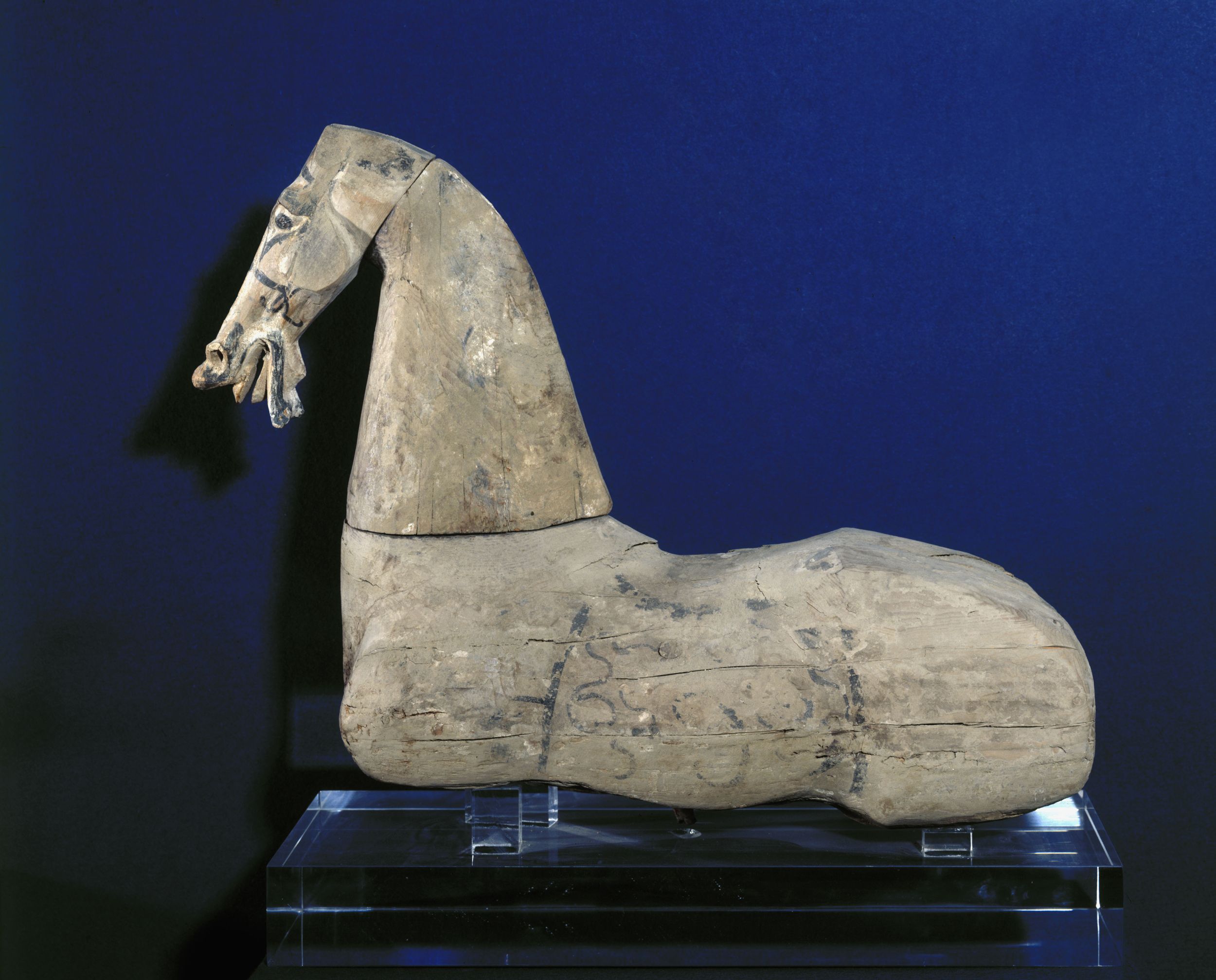
Cheval
Couleurs - Pigments
Statuette, Mingqi
Achat
M.C. 9829
This large wooden horse, whose legs must have disintegrated over time, provides the perfect image that the Chinese might have had of the great horses of Transoxania and for which Emperor Wudi (r. 141-87 BC) sent envoys from 102 BC. This quest for great stallions would be materialised in the Silk Road – “the Horse Road” for the Chinese – and would leave in China many funerary figures in terracotta, sometimes stone and, very rarely, wood.
The Cernuschi Museum has another horse, in terracotta and without legs, that is 57 cm long (M.C. XXXXX). The missing legs were perhaps originally made of wood. These horses were painted, and some must have been adorned with elements in leather and silk, which would explain the plain but powerful body; most attention was paid to the lively and detailed modelling of the “Parthenonian”-style head. Having lost all trace of apparel and paint, as is often the case with these pieces found before the war, this terracotta horse is in two separate parts: the body and the head attached to the neck.
The wooden horse described here is made up of three sections: the massive body with broadly modelled hindquarters and breast, the neck, and the small head, superb and lively, the black strokes emphasising the sharp lines of the features. The horse’s open lips drawn back over the teeth create a laughing expression more commonly seen in Western representations. Traces of beige and black monochrome suggest the harness and saddle.
Models of horses in wood are very rare finds in archaeological excavations. They have been recorded in various provinces, however: Canton, Jiangsu, Hubei, Sichuan and Gansu. The provenance of the Cernuschi Museum piece is uncertain, without knowledge of its archaeological context; however, it can be compared to items found in the Wuwei district, Gansu and at the Mozuizi (Mozuize) necropolis, among other sites.
A study carried out by par Mr Du-minh Lim (1999) provided the exact identification of the wood used: spruce, and not hinoki, a variety of cypress, as a superficial examination of the piece might have suggested.
Marie-Thérèse Bobot, Chine connue et inconnue : Dix années d'acquisitions au musée Cernuschi, Paris-Musées, 1992, p.114-117.



